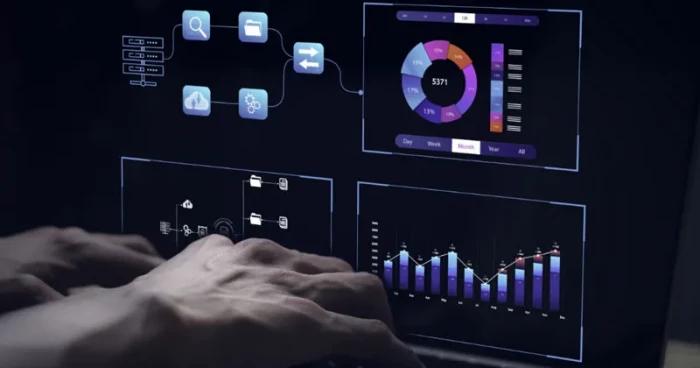Table of Content
Most of us associate predictive modelling with rather recent advancements in digital technology. However, this concept has actually existed for nearly a century. Some early examples include using statistical analyses to plot the possible trajectories of enemy aircraft during the Second World War, and collating comparatively large amounts of financial data to determine credit scores.
Times have certainly changed, and we are now living within a world that is at least partially based on the role of systems such as simulations and predictive analytics. The growing influence of artificial intelligence (AI) has likewise begun to reshape these approaches so that they offer even more innovative solutions.
This article will examine several principles. First, how does predictive modelling work? What is its role when creating digital simulations? Why is this method particularly useful when applied to probability-driven games? Even if you are not overly familiar with the technical side of things, the information provided below should shed some light on a rather interesting subject.
The Fundamentals of Predictive Modelling

The basics of predictive modelling are relatively simple. As the term may already suggest, this approach is primarily concerned with the analysis of past data when predicting future trends. Many systems now rely on artificial intelligence due to the ability of these algorithms to collect massive amounts of historical information within a short period of time.
Once the data has been gathered, several techniques can be used to determine how these details may affect future outcomes of a certain event. Some examples include:
- Time-series forecasting
- Technical charting
- Clustering data into specific categories
Either way, the main goal is to transform raw data into a series of statistics that can be interpreted by the end user.
Predictive modelling is already employed by countless industries. From detecting possible instances of fraud and retaining customers to determining the potential outcomes of an ongoing marketing campaign, the associated techniques are extremely useful. Let's now look at two realistic scenarios to better understand the benefits.
Probability-Driven Games
While the outcomes of some games are determined by the actions that a player will take (such as roulette), other are primarily based on statistical probabilities. Popular modern iterations such as crypto roulette are one example, and they are now offered by countless online casinos. Similar to slots, roulette results are associated with a series of random numbers. These are produced by algorithms known as random number generators (or RNGs).
The role of predictive analytics is to clarify the possibility of a certain outcome. If we use roulette as an example, this could be results such as:
- Black or red
- Landing a single number
- Landing multiple numbers
Historical data (such as the outcomes of previous matches) can be employed to appreciate specific scenarios, and to determine the odds of a certain event occurring at any given time.
However, it is important to mention that predictive modelling does not ensure that this outcome will take place. It merely represents another tool to develop a winning strategy. For example, a live dealer roulette game may be influenced by other variables such as the house edge, the actions of the host, the speed of the ball, the design of the wheel (including the number of slots), and sheer luck.
Cryptocurrency Investing
Speaking of cryptocurrencies, did you know that predictive modelling also enjoys a fair amount of popularity with investors? Several methods can be employed to more accurately predict the future prices of tokens such as Bitcoin, Ethereum, and Litecoin. While often referred to as "historical analyses", these are other forms of modelling.
For instance, a trader may employ charting tools such as Fibonacci retracements to better understand the long-term trends of an underlying asset. Candlestick chart patterns, historical support and resistance levels, and market sentiment are some additional examples that have proven their merit. As before, the intention is not to eliminate the risk associated with a trade. It is merely to mitigate this risk until it reaches an acceptable level.
Predictive Modelling and Simulations
So far, we have looked at a handful of basic applications associated with predictive modelling. This is when another relevant question arises. What about more complex systems? Does this approach remain valid? The best way to answer this concern is to highlight additional real-world scenarios, and to appreciate the role of simulations.
Let's imagine that you are employed by a multinational retail organisation. You have been tasked with determining how much revenue should be devoted to marketing throughout the next fiscal year. As numerous metrics will come into play, this responsibility is more challenging than it may initially appear. This is when the power of predictive modelling rises to the surface. Here is some of the typical data that will be gathered:
- The most popular products
- The most effective recent advertising campaigns
- Client retention rates
- Historical conversions
- Sales pipelines
This information will subsequently be grouped into a handful of discrete categories so that it can be accurately interpreted. Some of the more advanced modelling software packages may also include user-friendly tools such as charts and ad intelligence software, so that you are provided with a visual representation of this data; enabling you to better clarify long-term advertising trends.
Simulations are yet another potent means to understand the "big picture". Advanced algorithms will essentially create various scenarios based on the probability that each may occur within a predetermined time frame. In terms of marketing, these could include macroeconomic changes such as a recession, the actions taken by other competitors, and the number of units of a certain product that will be sold. The advantage here is that simulations are great ways to appreciate the strengths (and potential weaknesses) of a marketing campaign; enabling stakeholders to make changes as may be warranted.
The Role of Artificial Intelligence
We can now see why predictive modelling has become a popular tool within many organisations. How does artificial intelligence fit into the picture? While the principles may remain the same, AI is essentially a means to "supercharge" many of the tasks that might have been performed manually in the past. Here are three ways in which artificial intelligence can expedite the analytical process:
- Vast sets of data can be processed automatically.
- Predictive models are able to detect specific anomalies so that on-the-fly changes can be made.
- AI will provide much more accurate forecast models.
We should also stress how advanced many artificial intelligence protocols have become. Many of these now utilise machine learning; the ability to learn from past data without needing to follow an explicit set of instructions (such as those provided by a human counterpart). Generative AI is yet another revolutionary concept, as these algorithms are capable of providing human-like responses. This makes the data easier to interpret so that the appropriate actions can be taken when the time is right.
Can Predictive Modelling be Used by the Average Individual?
This is another relevant question that needs to be addressed. While the advantages that predictive modelling has to offer businesses are apparent, what about those who wish to use these very same tools to analyse everyday events? We will revert back to the earlier example of a game of roulette to put the pieces together.
Casinos such as Sportsbet have become a mainstay throughout the cryptocurrency gaming community, and their games are provably fair. In other words, they cannot be manipulated by third parties thanks to the presence of random number generators. Now, we will imagine that a user wants to play a few rounds of American roulette. The main goal here is to determine the probability of a ball landing on one of 36 numbers. Other concerns such as combinations, the size of the wager, and whether red or black is present may also be taken into account.
Although predictive analyses will never represent the "crystal ball" in terms of overall accuracy, they can undoubtedly be used to better appreciate the odds, the house edge, and the possibility of specific outcomes. Even cloud-based software programmes such as ChatGPT can now provide a detailed explanation of common permutations, and describe how these may affect gameplay in general.
Far from the Silver Bullet
Might predictive modelling and the use of simulations ever evolve to the point where they are able to provide rock-solid predictions? Most scientists believe that this is more fiction than reality. We need to remember that numerous variables may affect the outcomes, and that these are often difficult to detect. If we return to roulette, here are some examples of extraneous factors:
- The style of the croupier.
- The type of equipment used in a live game of online roulette.
- The speed of the rounds can make it difficult to employ a specific strategy; even if one is discovered.
While the somewhat "chaotic" nature of games such as roulette makes them a great deal of fun, it also signifies that predictive modelling can only go so far.
However, the applications of predictive analytics stretch far beyond popular online casino games. The fact that artificial intelligence has begun to play a role signifies that even more advancements could be just around the corner. As AI becomes embedded throughout the digital domain, there is little doubt that its impact on analytics in general will provide even more tangible solutions throughout countless industries.


